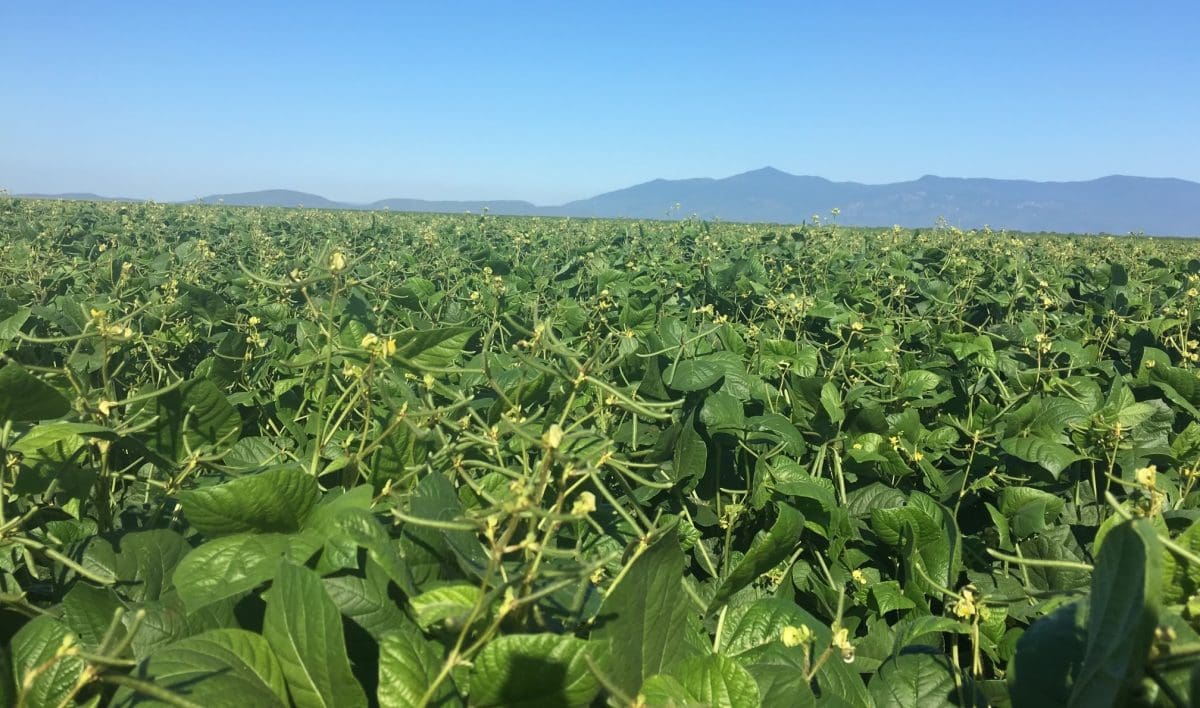
Recent rain in CQ could see a big mungbean crop this year.
RECENT rain in Central Queensland has the region’s growers in the box seat to take advantage of a firming world market for mungbeans.
Based largely on Chinese demand, prices have risen since December by around $50 per tonne to roughly $1300/t for No. 1 grade, May-June delivered packer, $1250/t for processing and $1200/t for manufacturing.
Australian Mungbean Association president and Australian Choice Exports managing director James Hunt said the industry was hoping CQ growers would produce up to 80,000t of mungbeans to fill the deficit left by a sharp seasonal turnaround on the Darling Downs and in New South Wales.
“There’s less crop in the south, first due to wet weather and then dry weather, so there’s a very good opportunity for CQ growers to cash in on good prices and high soil moisture,” Mr Hunt said.
Competitors’ crops reduced
Export competition for Australian mungbeans comes primarily from Myanmar, and also Brazil and Venezuela.
Mr Hunt said reduced production from all three has lifted prices.
“The Myanmar crop has reduced this year, and the lower quantity means higher prices.”
South American production has also diminished because of challenging seasons.
“The Brazilian summer crop has been affected by dry weather and then wet weather, and the Venezuelan crop is 40pc of what it was last year.
“It’s all boding very well for Australian mungbeans.”
Good fit for CQ
February is the optimum time to plant mungbeans in CQ, and Mr Hunt said while some CQ crops have been planted already, hopes are high more will go in to enable Australia to maintain a considerable export volume.
“CQ had a big wheat program last year, so there’s stubble country with good moisture for mungbeans to go into.”
While cotton has taken up much of the irrigated area, mungbeans remain an option for dryland country, and Mr Hunt said planting seed is readily available.
“There’s plenty of seed because some of the volume that had been pre-ordered by NSW and Downs growers didn’t end up getting planted.”
Mr Hunt said area contracts as offered by a number of packers make for a straightforward marketing option for CQ growers.
“The ability to lock in hectare contracts is something unique to mungbeans; growers can lock in half or more of their crop without having to worry about what the yield is.”
CQ mungs are generally harvested in May-June, later than NSW and southern Queensland.
In sharp contrast to growers in NSW and southern Queensland, CQ growers have had 50-100mm of rain since January 1, and considerably more in places, to set them up for good yield prospects for the short-season crop.
The AMA has estimated the Australian crop harvested last year at around 120,000t.
Mr Hunt said good subsoil moisture in all regions, plus prospects for a sizeable area in CQ, can at least see new crop match that figure.
“Last year turned into a pretty bad season because it got so wet and crops ready to harvest sat in paddocks and the quality and the yield suffered.”
Season turns on NSW, Downs
An extremely wet winter and spring in NSW had growers as far south as the Upper Lachlan Valley talking considerable areas of mungbeans to be planted over summer in what is traditionally a winter-cropping only region.
However, December and January turned dry, and Mr Hunt said NSW and southern Queensland, where considerable areas of mungbeans are usually planted, are looking at a smaller-than-normal crop.
“In NSW and southern Queensland, it’s technically not too late to plant even to the end of February, but the moisture’s just not there.
“Last year, NSW produced around 60,000t of mungbeans, and it might turn out to be half of that this year.”
Dryland cotton area in NSW is up considerably this year, and this has taken some available area from mungbeans, as have corn and sorghum plantings.
The situation is similar on the Downs.
“There was moisture early on in NSW for early planting of cotton and mungs, and as we came to that later planting window for mungs, country had set really hard.
“The season hasn’t turned out like they’d hoped on the Downs either.”
Grain Central: Get our free news straight to your inbox – Click here



HAVE YOUR SAY